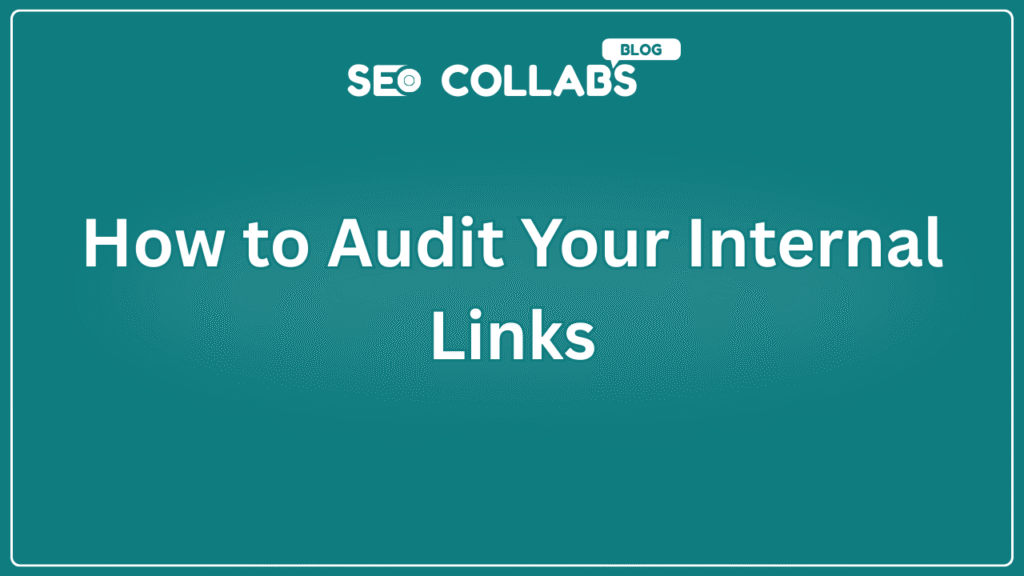Your website’s internal links are like the veins of a living organism—they keep your SEO healthy, distribute authority, and guide users (and search engines) to what matters most. But when those links break or go rogue, your site’s health plummets. Let’s explore how to audit your internal links using powerhouse tools like Screaming Frog, Ahrefs, and SEMrush, and fix common issues to boost rankings, traffic, and user experience. Plus, discover how SEO Collabs can elevate your linking strategy beyond internal fixes.
Table of Contents
Why Internal Link Audits Matter
Internal links do three critical jobs
- Distribute Link Equity: Pass authority from high-ranking pages to newer or weaker ones.
- Improve Crawlability: Help search engines discover and index your content.
- Enhance User Experience: Keep visitors engaged with relevant content.
Imagine your website as a city: Broken links are potholes, orphaned pages are abandoned buildings, and poor anchor text is confusing street signs. An audit is your roadmap to repair and optimize.

Steps to Audit Your Internal Links
Step 1: Use the Right Tools to Uncover Issues
Screaming Frog
- What It Does: Crawls your site to map every internal link, URL, and metadata.
- Key Features:
- Identifies orphan pages (pages with zero internal links).
- Flags broken links (404 errors) and redirect chains.
- Exports data for easy analysis.
- Pro Tip: Set the crawler to “Internal” mode to focus solely on your site’s structure.
Example: A tech blog found 15 orphaned product pages using Screaming Frog—fixing them boosted organic traffic by 20%.
Also Read
Ahrefs
- What It Does: Analyzes backlinks and internal links with its “Site Audit” tool.
- Key Features:
- Tracks link equity distribution to prioritize high-impact fixes.
- Highlights pages with excessive outbound links.
- Checks for duplicate content cannibalizing your links.
- Pro Tip: Use the “Best Links” report to see which pages pass the most equity.
Case Study: An e-commerce site used Ahrefs to redirect broken links to trending product pages, resulting in a 30% sales increase.
SEMrush
- What It Does: Offers a holistic “Site Audit” tool with actionable insights.
- Key Features:
- Detects thin content hurting your link structure.
- Maps internal linking depth (e.g., how many clicks from the homepage).
- Recommends anchor text optimization.
- Pro Tip: Use the “Internal Linking” report to find underlinked pages.
Step 2: Fix Common Internal Link Issues
Broken Links
- Tool: Screaming Frog or SEMrush.
- Fix: Redirect broken URLs to relevant pages (301 redirects) or update links.
Orphaned Pages
- Tool: Ahrefs’ “Pages with No Incoming Links” filter.
- Fix: Add internal links from high-traffic posts or category pages.
Over-Optimized Anchor Text
- Tool: SEMrush’s “Anchor Text” report.
- Fix: Replace exact-match keywords (e.g., “best SEO tools”) with descriptive phrases (e.g., “discover our favorite SEO tools”).
Shallow Linking
- Issue: Only linking to the homepage or top-level pages.
- Fix: Deep-link to blog posts, product pages, or guides (e.g., “Learn how to clean leather shoes in our care guide”).
Step 3: Build a Sustainable Linking Strategy
- Create Content Clusters: Group related posts around pillar content (e.g., “Digital Marketing 101” linking to “Email Marketing Tips”).
- Update Old Posts: Add links to newer content (e.g., “As mentioned in our 2024 SEO trends report…”).
- Automate Monitoring: Use Ahrefs or SEMrush alerts to catch issues early.
How SEO Collabs Supercharges Your Linking Ecosystem
While internal links fortify your site’s foundation, external backlinks amplify your authority. SEO Collabs bridges both worlds by:
- Connecting You with Vetted Partners: Collaborate on guest posts or resource swaps to earn niche-relevant backlinks.
- Streamlining Outreach: Use pre-built templates to pitch collaborations, saving hours of manual work.
- Ensuring Compliance: Built-in checks prevent over-optimization and spammy links.
Think of SEO Collabs as your external linking sidekick—working in tandem with your internal audits to build a bulletproof SEO strategy.
Internal vs. External Links: A Quick Refresher
Still fuzzy on how these link types work together? Dive deeper with our guide: Internal vs. External Links: What’s the Real Difference?.
Real-World Fixes in Action
- Case Study 1: A travel blog fixed 50 broken internal links and saw a 15% drop in bounce rates.
- Case Study 2: A SaaS company restructured internal links to their pricing page, boosting conversions by 25%.
Your Action Plan
- Crawl: Use Screaming Frog to find broken/orphaned pages.
- Analyze: Leverage Ahrefs/SEMrush to assess equity distribution.
- Optimize: Fix anchors, redirect broken links, and deepen your structure.
- Collaborate: Use SEO Collabs to build external links that complement your internal efforts.
Conclusion
Auditing internal links isn’t a one-time chore—it’s a habit that keeps your site agile, authoritative, and algorithm-friendly. Pair these fixes with strategic backlinks via SEO Collabs, and you’ll create a seamless SEO ecosystem that drives traffic and trust.

Ready to Transform Your Site’s Health?
👉 Try SEO Collabs to ethically scale your link-building while mastering internal audits.
Why Wait?
- Internal Links: Fix your site’s foundation.
- SEO Collabs: Build bridges to external authority.
- Result: A ranking machine that Google and users love.
Your site deserves more than quick fixes—it deserves a strategy that lasts. Start auditing today!




